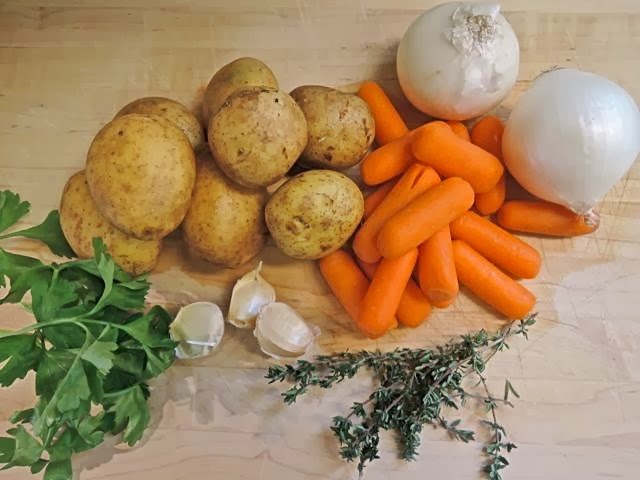Slow-cooked
pork is one of the most flavorful, succulent meat dishes around. It’s the basis
of “pulled pork” recipes, which simply means shredding (or “pulling”) the
tender meat before serving. The pork makes a great filling for warm
tortillas—along with sweet caramelized onions and fresh cilantro—for a simple,
satisfying dinner with a little Latin American flair.
I included
traditional Cuban “mojo” ingredients for the braising liquid in this recipe.
Mojo is the go-to sauce on tables throughout Cuba, adding savory, citrusy, and
garlicky flavor to anything it’s paired with. Other than the flavor, the best
part about it is how simple and common the ingredients are: orange, lime,
garlic, oregano, cumin, and cilantro.
Serve the
wraps with a side of black beans, or skip the tortillas and beans and serve the
pork and onions over a bed of steamed white rice.
Serves 4
Ingredients
For the Braised Pork
- 2 tbsp
olive oil
- 2 1/2-lb
pork shoulder (Boston butt), trimmed and cut into 2-inch chunks
- 3 garlic cloves, chopped
- 1 small
onion, chopped
- sea salt
- freshly
ground black pepper
- 1 seedless
orange, quartered
- 1 lime,
quartered
- 1 tsp
ground cumin
- 1 tsp dried
oregano
- 1 14.5-oz
can of vegetable broth
- 2 cups
loose cilantro sprigs, long stems removed
- 4
fajita-sized tortillas (or 8 taco-sized flour tortillas)
 |
| Fruit and Vegetables for the Pork Braising Liquid |
For the Caramelized Onions
- 1 tbsp olive oil
- 1/2 tbsp
unsalted butter
- 2 medium
onions, cut into thin, vertical strips
- sea salt
- freshly
ground black pepper
Preparation
For the Braised Pork
- Preheat the
oven to 325° F.
- Heat a
Dutch oven (or large, heavy, ovenproof pot with a tight-fitting lid) over
medium heat and add the olive oil.
- Add the
pork, garlic, and onion and season with salt and pepper. Cook until the pork
begins to brown in spots, turning 2-3 times, about 5 minutes.
- Squeeze the
juice from the orange and lime quarters into the pot, then stir in the cumin
and oregano. Cook 2 minutes.
- Add the
vegetable broth and bring to a light simmer. Cover the pot and place in the
oven. Braise 1 1/2 hours.
- Reduce the temperature to
250° and stir the ingredients. Return the cover to the pot and braise 1 hour longer.
- Remove the
pork to a bowl with a slotted spoon. When it’s cool enough to handle, shred it
with your fingers, or, alternatively, use 2 forks to shred the meat. (If it's
too cool to serve at this point, place it in a skillet and warm over low heat
on the stovetop. Add a little of the braising liquid to keep it moist.)
- To serve,
place the pulled pork, caramelized onions (recipe follows), and cilantro in separate bowls alongside the tortillas and
let your guests build their own wraps.
 |
| Pork Sauted on the Stovetop |
 |
| Pork with Juices and Broth Ready to Braise |
 |
| Pork after 1.5 Hours of Braising |
 |
| Braised Pork |
 |
| Pulled Braised Pork |
For the Caramelized Onions
- Heat a skillet over medium-low heat and add the oil and butter.
- When the
butter has melted, add the onions and season with salt and pepper. Cover the
skillet and reduce the heat to low.
- Cook slowly until the onions are very soft and
caramelized, stirring a few times, about 20 minutes.
 |
| Onions Beginning to Cook |
 |
| Caramelized Onions |


















































